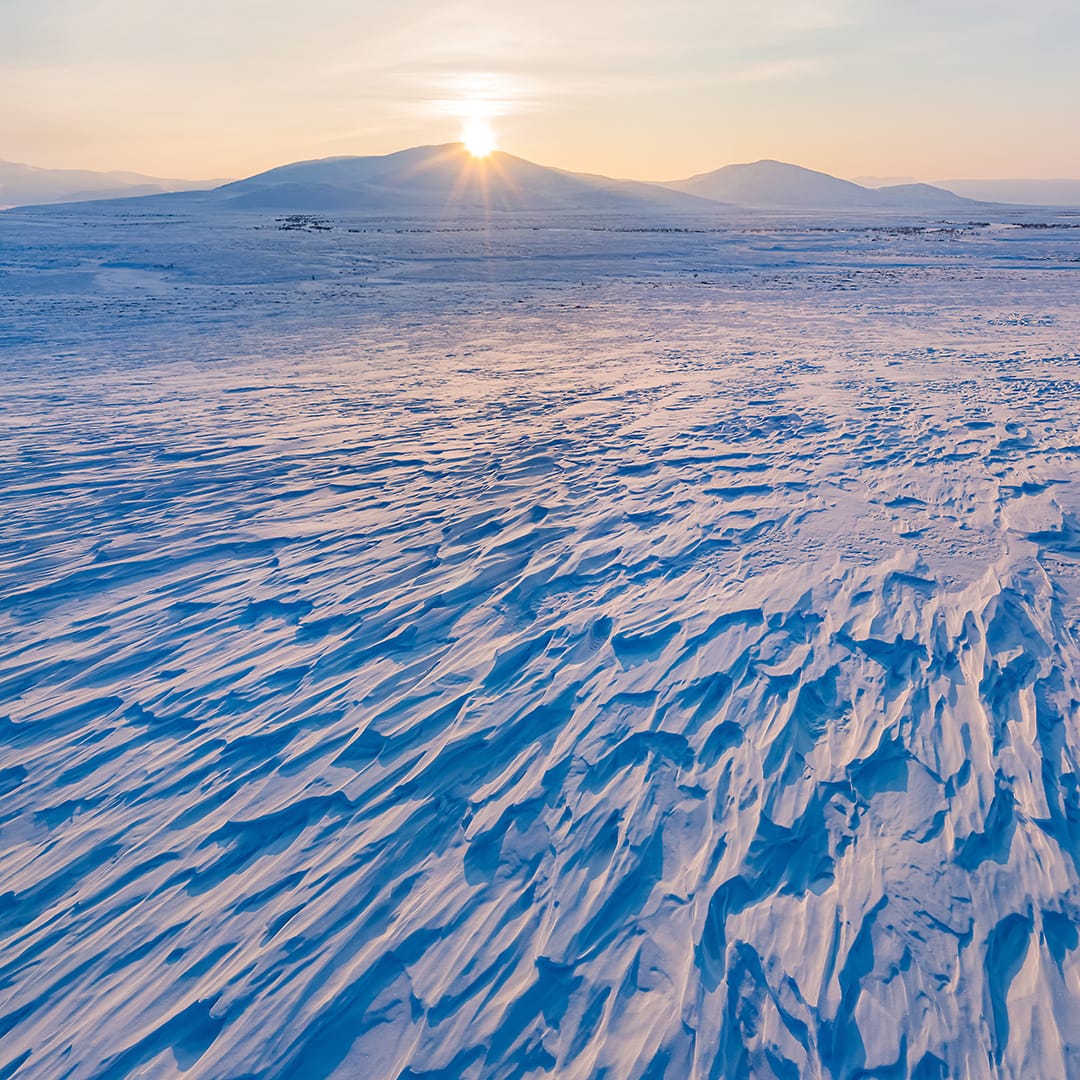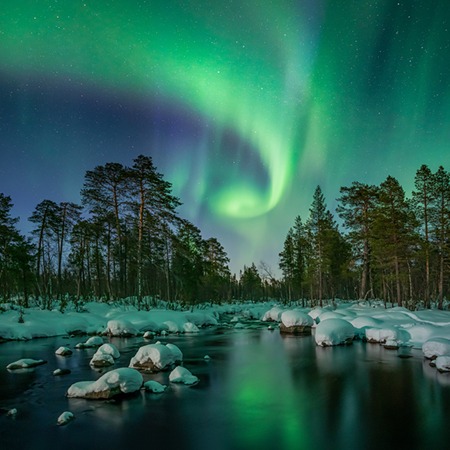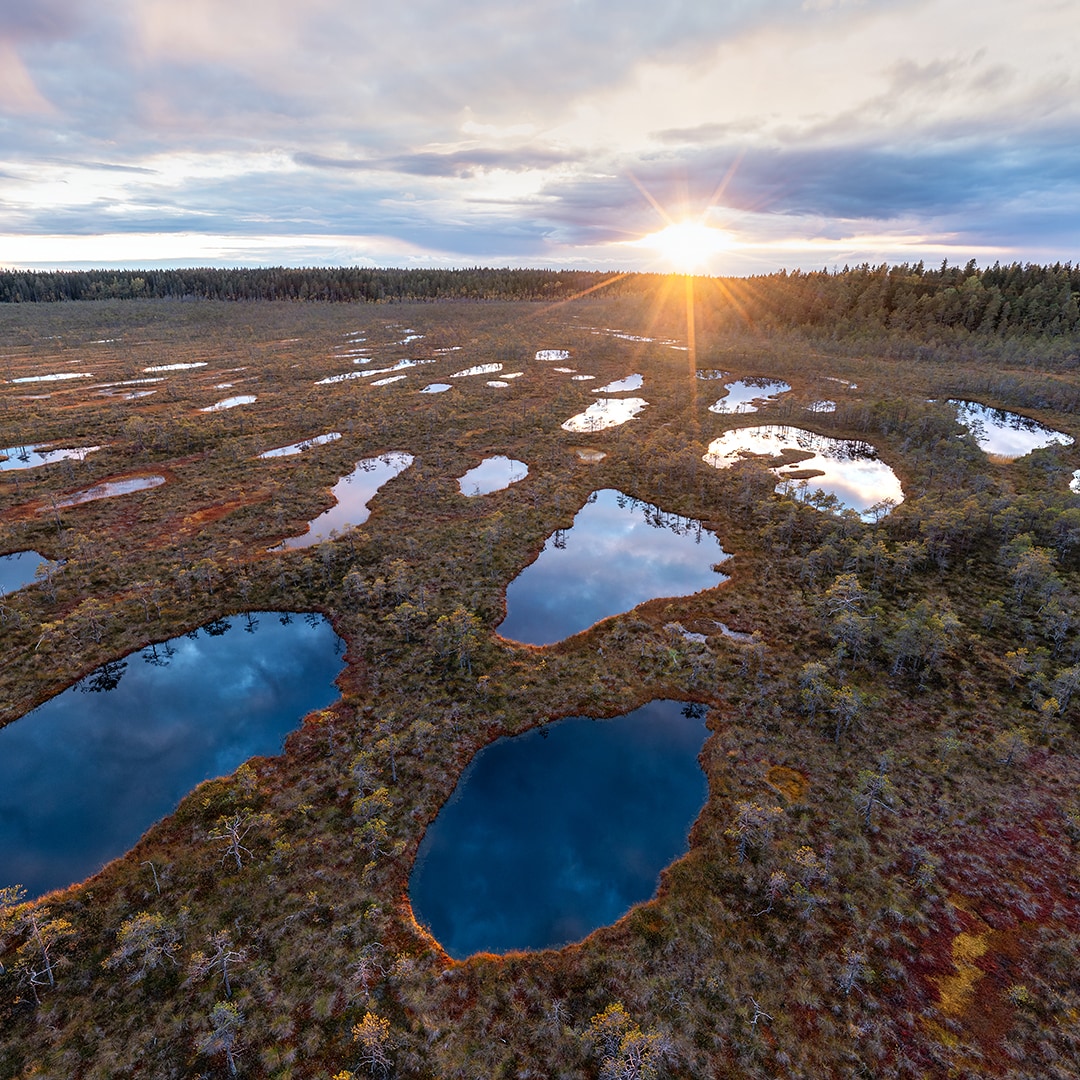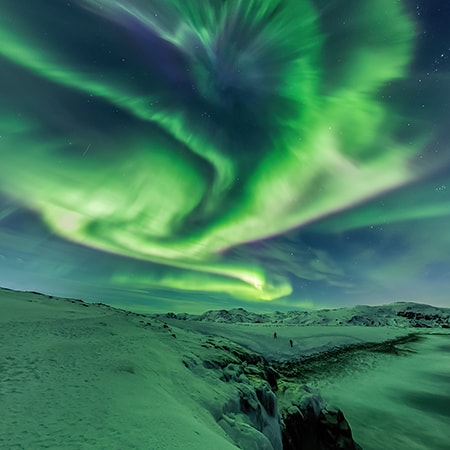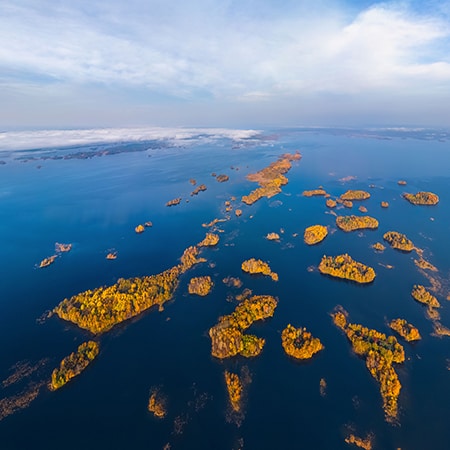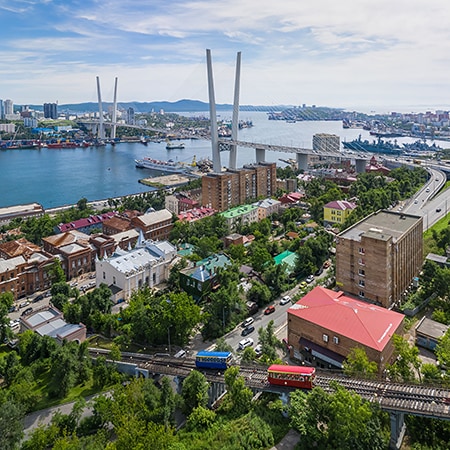Plosky Tolbachik Volcano Eruption, Kamchatka, Russia
Today we would like to show the updated and extended 360° video of the Plosky Tolbachik volcano eruption on Kamchatka, which has been taken in December 2012. It was a long time ago but still it is one of the most beautifull eruptions we have ever seen.
If you would like to see our photo virtual tour of volcano, please click here. And now here are some words about our adventure.
The helicopter to Tolbachick volcano in Esso village is located 500 km away from Petropavlovsk-Kamchatsk. 500 kilometers of rough paved and unpaved roads which I vaguely remember due to severe jetlag and a huge time difference with with Moscow. When we finally reached our hotel there was no time for rest: assembling and testing our equipment took half of the night. We woke before sunrise after a short nap and found our crew warming up the frozen Mi-8, a twin-turbine transport helicopter, preparing it for take off. It was -19°C (-2°F) outside.
The flight from Esso to Tolbachik takes about 30 minutes. Soon we see the front of lava stream in our helicopter windows... There is smoke, but no open fire — the forest is not burning. We hover, open hatches and start shooting. The volcano in front of us is covered with clouds and smoke. We decide to move up the lava flow. Finally there are the first red hot lava streams underneath us! We slow down the helicopter and shoot several spherical panoramas. We are overwhelmed — we finally saw IT!
Going higher is impossible due to heavy clouds, and so our crew starts looking for a landing spot on the slope. Flying over a cold lava stream we see a group of tourists leisurely walking along its side. Some of them are dressed rather interesting. For example, I see a shining silver jumpsuit resembling the heat-resistant outfits of firefighters. There is another helicopter parked on a snowfield. We land a bit higher up the slope and go to check out lava stream from the ground.

It is freezing cold down here, and a strong wind doesn't make it feel better. We reach the lava stream: side rocks are warm to the touch. However, after walking 50 meters into the lava field we notice red glow of lava from underneath the rocks. The outside temperature increases very fast; everybody is hot. In a few minutes we realize that there is no way to safely get to moving lava from where we were. By the time we reached the next hill, the soles of our boots were smoking. We decide not to go into the hell mouth.

We take rest on the slope waiting for a better weather. According to our pilots, the sky usually clears out by evening. However, today it only gets worse. Clouds become heavier, and the wind stronger. Shooting from RC helicopter in such weather conditions would be a waste of our equipment. We decide to do a test flight towards the lava stream, and then look for a new landing spot closer to the cone of the active volcano.

We take off in a thick fog or smoke. Suddenly a river of fire opens right in front of us! Dima and I realize that all the footage we shot before this moment is worthless compared to the new picture. We open the hatches and windows and start shooting. We change our position and height; we ask the captain to go lower to the center of the lava stream. Air in the helicopter cabin gets very hot.
I have to give credits to our crew and especially to our captain, Dmitry. At times we hovered over the hot lava very low. Ascending flows of hot air threw the helicopter side to side like a feather, but Dmitry held it over the spot as if it was tied to an invisible anchor. Every time I looked out of the window with my camera it felt like I was sticking my head into a hot oven. Everyone was perspiring from unbearable heat and concentration.
Despite of our efforts, we could not reach the volcanic cone at this time because clouds around the volcano did not lift by the end of the day. Instead, our helicopter landed near Sergey Gorshkov's camp. The spot offered a nice view of the hot lava flow. We spent almost an hour watching the unstoppable force of nature in fascination while waiting for the evening light. Imagine standing next to a mountain of rocks, which is 5-10 meters high, hundreds of meters wide, and tens of kilometers long. Imagine this huge mountain moving in front of your eyes — slowly, but fast enough for you to see, rustling loudly at the same time. It feels unreal and your mind refuses to believe that it's really happening...

The sunset clouds lit up with a fantastic purple hue. Our Mi-8 immediately took off so we could photograph one of the most beautiful panoramas of our trip over the lava flow. The sun disappeared over the horizon, and we returned to our base in Esso at dusk.
The following morning we decided to fly out before the sunrise. However, the Mi-8 cabin heater messed up our plans. Yesterday night it was malfunctioning, but airport mechanics managed to fix it. Unfortunately, after a freezing night, it gave up completely. It is -25°C (-13°F) outside, and while the mechanics are unsuccessfully trying to revive the heater, we ask our captain if it is possible to fly without it. Dmitry says that it is possible, but we will be really cold up in the mountains. It is up to us. It didn't take us long to make a decision: we are going, there would be no second chance for good weather.
As we got closer to Tolbachik, we realize how incredibly lucky we were! The slopes of the volcano were clear of clouds; the visibility was perfect up to the horizon. The morning sun lit up the plume of smoke from the active volcanic cone. We are going straight to the cone; flying around it; and — here it is! Finally we see from a very short distance a fountain of lava in the volcanic cone; a fantastic, unforgettable sight! We shoot spherical panoramas before our helicopter lands about 1 kilometer away from the cone.
It is time to check the perimeter. The outside temperature dropped even more because of strong winds (10-15 m/sec). We reach an old lava stream; it is scary to go further — the soil under our feet is hot. In a photograph, patches of white snow make the surface look cold. In reality, you can warm up frozen camera batteries under the top layer of soil, and if you dig a little deeper, the soles of your boots will start to melt. Cracks are everywhere; steam and gas flow out of the ground. The volcanic cone is right in front of us: every few seconds it explodes with a great roar, spitting hot lava 200 meters high. It is hypnotizing, but we have to work. I go back to Mi-8 to collect our RC helicopter.

I put on my heaviest clothing and return to our group. With a ski mask on my face and ski gloves on my hands, I crawl up to the snowfield. I feel like Neil Armstrong, making first steps on the Moon.
Together with Dima Moiseyenko we prepare the RC helicopter for take off. What will come out of it? We don't know. The current weather condition is way beyond our equipment's capacity. The lowest temperature in which I piloted the helicopter before was -15°C (5°F) with no wind. And now we are at about 1500 meters altitude, and the atmospheric temperature is -31°C (-24°F) with rather strong wind.
We check and double-check everything: camera works fine, video transmitter works fine. I start the engines — they don't respond; they are probably frozen. I re-start the helicopter several times — no luck. We cannot fly!
It is unsettling, but not fatal: we always have a spare helicopter for cases exactly like this. I leave Dima to photograph the volcanic cone and walk back to Mi-8 to assemble our second ‘copter'. It is -25°C (-13°F) inside the cabin, all water bottles are frozen solid, but I don't feel the cold. The spare helicopter is assembled in about half an hour, and I return to our group on the lava field.
We go over pre-flight check once again. I start the engines — they don't respond again! One more try and... start! The helicopter is unstable, but I take a risk, and it slowly ascends. We are up in the air, and begin shooting a spherical panorama. Next to me is Dima, counting frames and timing the flight. Time to time strong gusts of wind dangerously throw the helicopter, but I manage to keep it in a relatively stable position. Finally the photo session is over; I bring the helicopter down and catch it. My hands and legs are slightly shaking of an adrenalin charge.
Dima and I flip through images — it looks like we were too far away. We decide to get closer to the cone. We carefully walk on a side of the lava field, scared to go further in — cracks are everywhere. Finally voice of reason tells us to stop and let the machines continue from this point. One more pre-flight check; we take off again and begin photographing the volcanic cone from different angles. The helicopter returns and we see that this session was much better. Dima says: "Let's try to fly up to the very cone! We have already got good footage, perhaps we'll be lucky again." We replace a flash card in the camera and let our helicopter fly. I send it straight to the cone, but suddenly something terrible happens — our ‘bird' falls on the lava field and crashes. Most likely its battery gave up in the cold, or, perhaps, one of the engine controllers failed. There was no time for analyzing — forgetting our safety precautions, we ran to rescue what was left of the equipment.

Surprisingly, I was not upset by this incident — perhaps, my system was still filled with adrenalin: we had to try flying in impossible weather conditions, and we did it! Yes, the RC helicopter crashed, but it had enough time to shoot several unique spherical panoramas much closer than we could have ever done from a big helicopter.
We disassembled and packed our RC helicopters waiting for the evening light. It is still 40 minutes till the sunset, and together with the Mi-8 crew we go to the lava field to photograph fountains of lava inside the volcanic cone. It looks like the volcano got much more active by the end of the day. In spite of the freezing cold and strong wind we were captivated by its beauty and almost lost a track of time. With a great effort we turn away from watching the volcano and run back to the helicopter.
Engines start; the helicopter takes off; we habitually open hatches and start working. As if the volcano decided to thank us for our patience and stamina — double fountains of hot lava shoot up several meters high for the last 30 minutes. This was one of the most memorable and beautiful moments of our flight.
We returned to our base in Esso in the dark — tired, freezing, but very happy with the result. We did it! We photographed our first active volcano!

At the end, I would like to thank the people who made this trip possible and helped us achieve such impressive results:
Crew of the Mi-8 helicopter of Kamchatski airlines, and especially their captain, Dmitry Zadirey.
Photogapher Sergey Gorshkov.
Photogapher Denis Budkov who kindly allowed to use his photos in this article.
Volcanologists: Olga Girina and Dmitry Melnikov, who made detailed descriptions of locations and objects that you can see on the panoramas.
And all concerned people from the First Kamchatka Forum, who helped us with advice and contact information.
We also would like to ive you some useful facts about Tolbachik Volcano:
Tolbachik Volcano (active Plosky Tolbachik (3085 m) and extinct Ostry Tolbachik (3682 m)) is the largest volcanic center of the southwestern sector of the Klyuchevskaya volcanic group.
About 10 000 years ago (in the Early Holocene), at the summit of Plosky Tolbachik was formed the first caldera some 3 km in diameter and also a regional zone of cinder cones northeast and southwest of the volcano resembling rifts Hawaiian volcanoes.
South zone extends about 45-50 km to the volcano Nikolka, and is called Tolbachinsky Dol. About 80% of the eruptive centers in the form of multitude fissures and chains of cinder cones concentrated along the center zone of Dol in a narrow (3-4 km) strip.
It is reliable known for two eruptions in Tolbachinsky Dol: 1941 and 1975-1976.
First took place on 7-14 May, 1941. The week of the eruption there were formed: the cinder cone about 200 m in height, 0.07 km3 of pyroclastics; lava flow 5 km in length, 0.03 km3 of lava.
Second eruption lasted from July 6, 1975 to December 10, 1976. It was predicted by P.I. Tokarev, a week before the event (the first in the world). This allowed volcanologists to observe in detail the beginning of the fissure eruption. The 1.5 years of the eruption there were formed: 8 cinder cones about 300 m in height, about 1.0 km3 of pyroclastics; lava flow 9.5 km in length, 1.2 km3 of lava.
The new fissure eruption on Tolbachinsky Dol began on November 27, 2012, and continuing at present. From November 27 until December 05, the area of lava flows was about 20 km2. The volume of eruptive material (pyroclastics and lava) at December 20, 2012, is estimated at 1.0 km3.
Description is written by O.A. Girina
Authors of the video: Dmitry Moiseenko and Ivan Roslyakov
31 October 2017
Read more
Virtual Travels in 360°
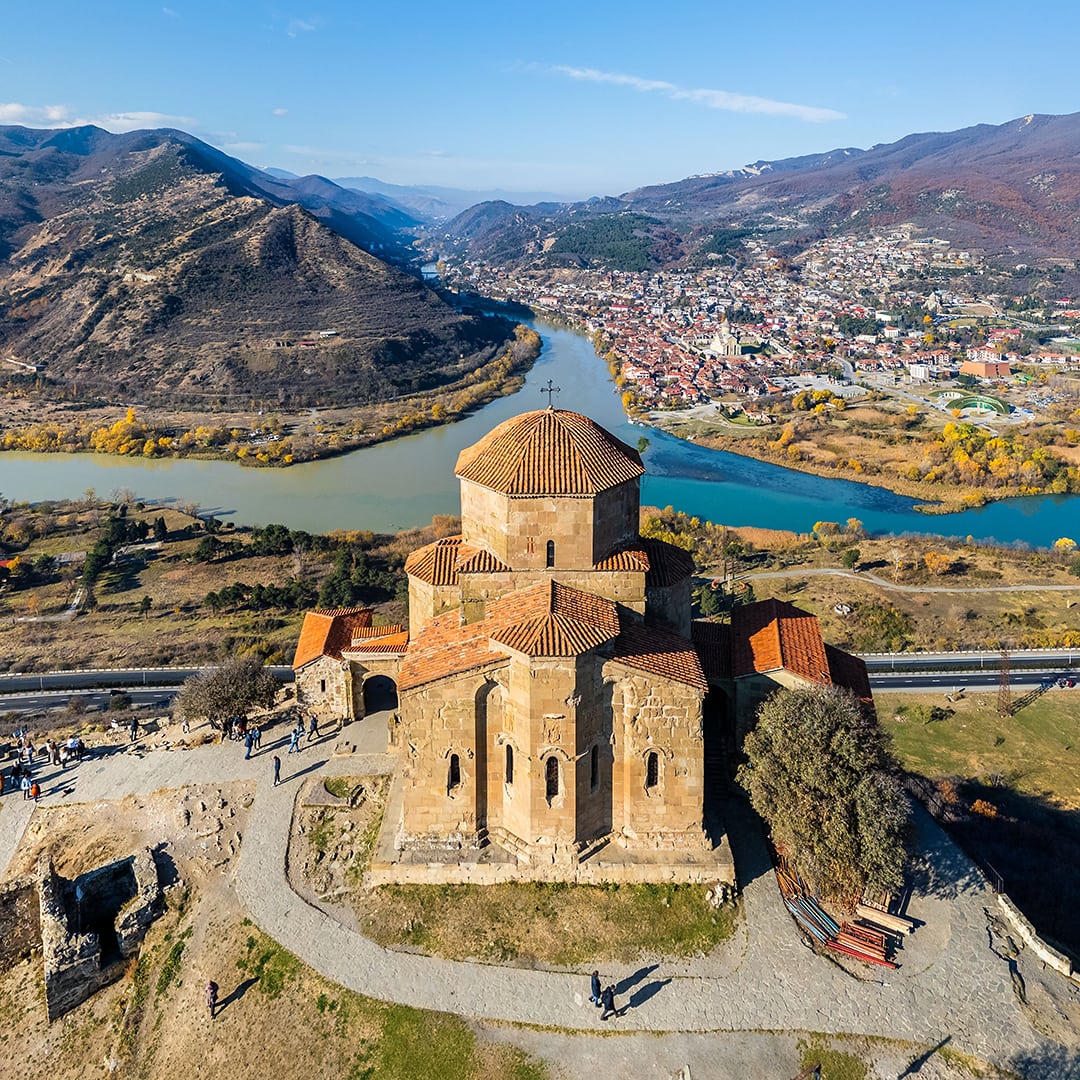 Trip to Georgia
Trip to Georgia
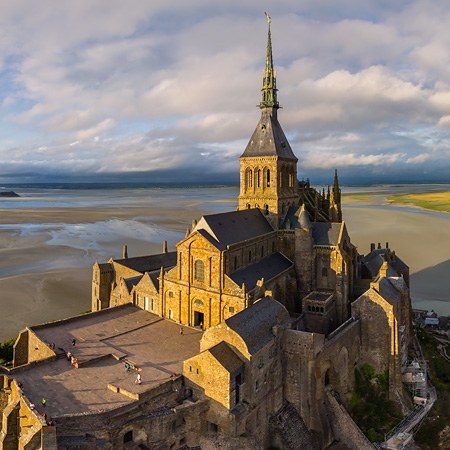 Abbey Mont Saint-Michel, France
Abbey Mont Saint-Michel, France
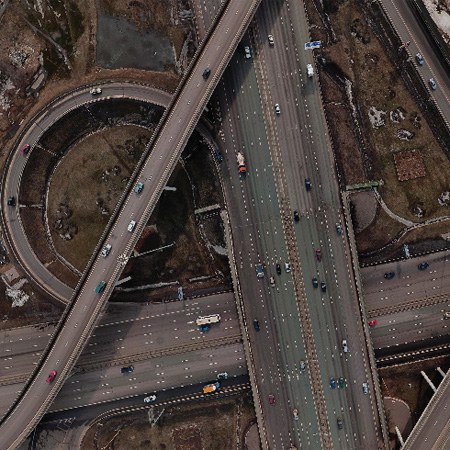 Moscow Automobile Ring Road (MKAD), Russia
Moscow Automobile Ring Road (MKAD), Russia
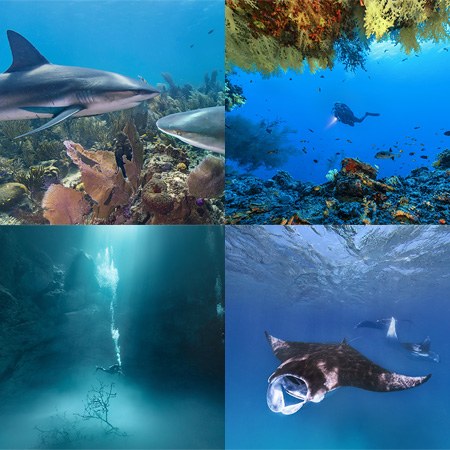 Underwater
Underwater
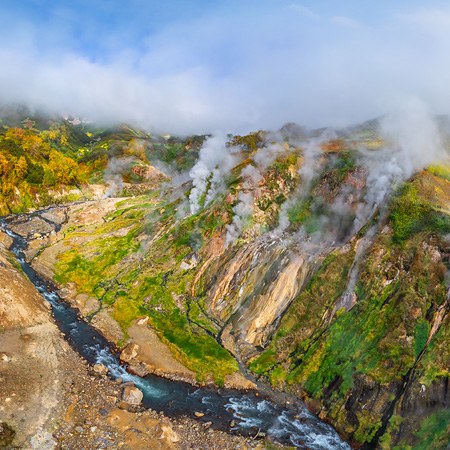 Valley of Geysers, Kamchatka, Russia. Part II
Valley of Geysers, Kamchatka, Russia. Part II
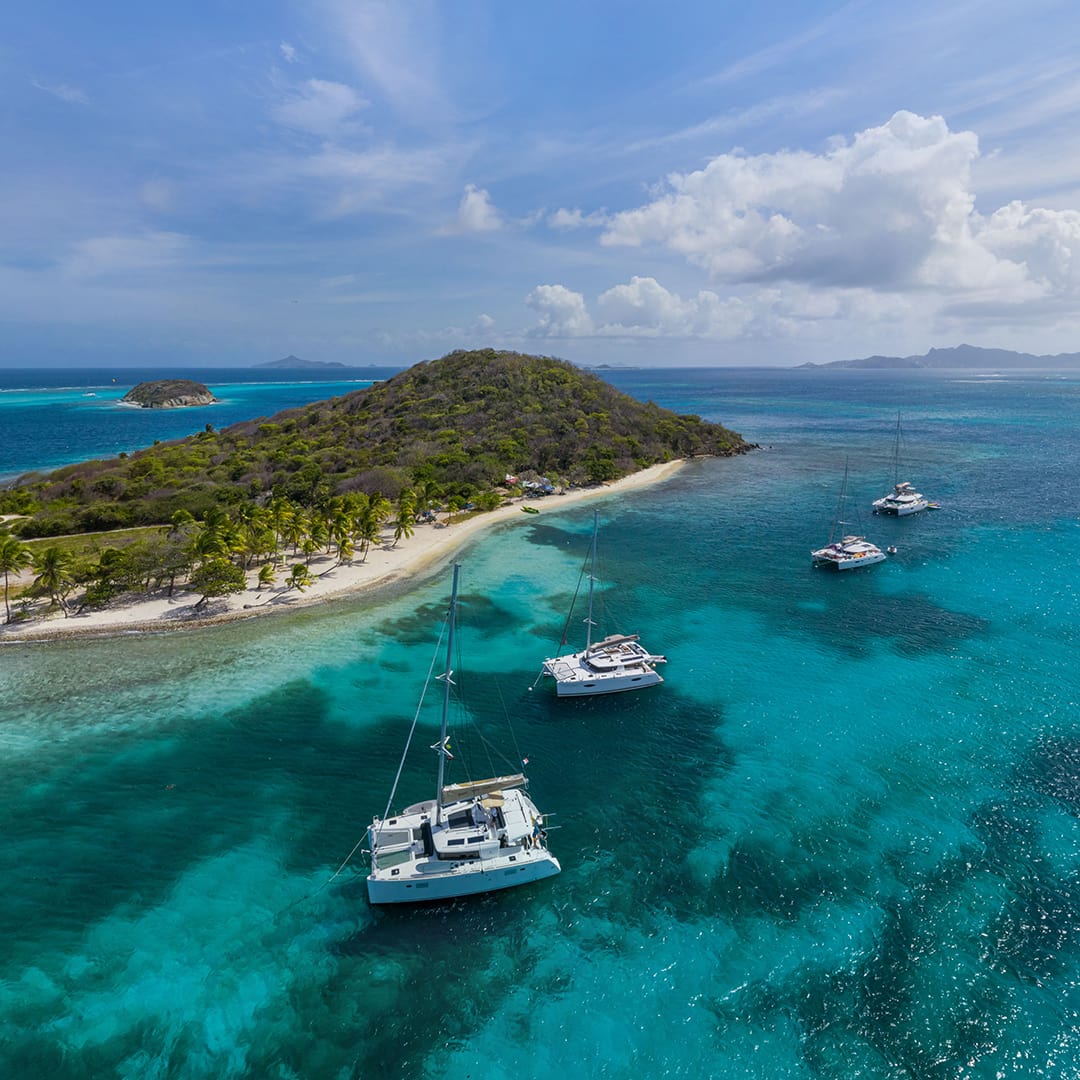 Welcome to the Caribbean
Welcome to the Caribbean
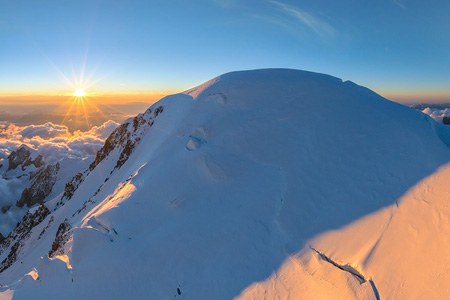 Mont Blanc, Italy-France. Part IV
Mont Blanc, Italy-France. Part IV
 Spring in Moscow
Spring in Moscow
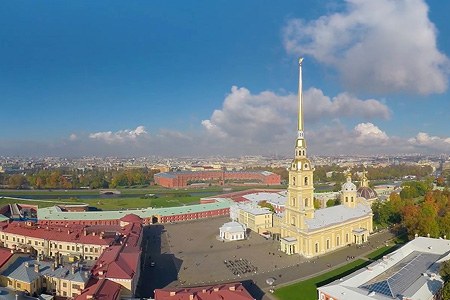 Peter and Paul fortress, Saint Petersburg, Russia
Peter and Paul fortress, Saint Petersburg, Russia
 Reine, Lofoten archipelago, Norway
Reine, Lofoten archipelago, Norway
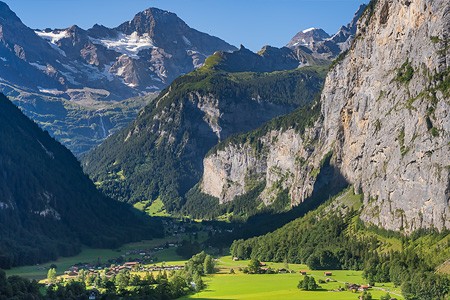 Lauterbrunnen. The valley of waterfalls and mountain peaks. Switzerland
Lauterbrunnen. The valley of waterfalls and mountain peaks. Switzerland
Show more




